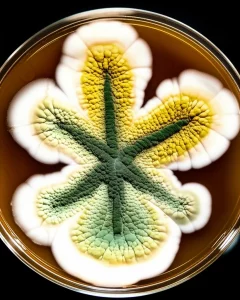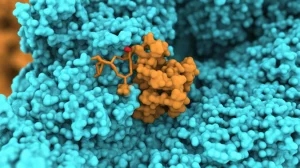Tiny Fungi, Big Hope: Rosemary Roots Fight Sleeping Sickness
Hey there! Let me tell you about something pretty cool I just learned. You know how sometimes the biggest breakthroughs come from the most unexpected places? Well, guess what? It turns out the humble rosemary plant, the one you might have in your garden for cooking, might be hiding a secret weapon against a really nasty disease called African Trypanosomiasis, or sleeping sickness.
It’s a serious problem, affecting millions, and the current treatments? Not always great. We desperately need new options. And where are we looking? Deep inside the roots of plants, specifically at the tiny fungal friends living there.
The Unsung Heroes: Endophytes
Think of plants as bustling communities, not just solo acts. Living *inside* their tissues, without causing any trouble (usually!), are these microscopic organisms called endophytes. They’re like tiny roommates. Sometimes, this relationship is super helpful for the plant – the endophytes might produce chemicals that help the plant grow or defend itself. And here’s the exciting part for us: these endophytes can also churn out amazing natural compounds that could be useful as medicines! Scientists have been getting really interested in these hidden factories lately.
Rosemary’s Secret Agents
So, my friends in the lab decided to peek inside the roots of rosemary (*Rosmarinus officinalis*). Why rosemary? Maybe because rosemary itself is known for having some cool properties. They wondered if its fungal partners might be producing something special too. They collected some roots, carefully isolated the fungi living inside, and grew them up.
They ended up with three specific types of fungi. After some clever genetic detective work, they identified them as belonging to the genera *Cladosporium*, *Alternaria*, and *Talaromyces*. Pretty cool names, right?
The Detective Work: Finding the Fungi and Their Arsenal
Once they had these fungal buddies growing happily, the next step was to see what chemical goodies they were making. They grew the fungi on a special rice medium – think of it as giving them a comfy place to live and work. Then, they extracted all the compounds the fungi had produced using ethyl acetate.
This is where the high-tech stuff comes in: they used something called metabolomic profiling with fancy equipment (LC-HR-ESI-MS). Imagine it like taking a complete inventory of every single chemical compound in the extract. They found a whopping 47 different metabolites! These weren’t just random chemicals; they belonged to interesting groups like terpenes, phenolics, alkaloids, and more – types of compounds that often have biological activity.

Putting Them to the Test: Fighting Sleeping Sickness
Now for the main event: would these fungal extracts actually fight the parasite that causes sleeping sickness, *Trypanosoma brucei*? They did lab tests, exposing the parasites to different concentrations of the extracts. And guess what? They totally worked!
All three fungal extracts showed potential inhibitory effects. The *Cladosporium* extract was the most potent, with an IC50 value of just 1.3 µg/mL. (In simple terms, a lower IC50 means you need less of the substance to kill half the parasites – so, 1.3 is pretty good!). The *Alternaria* and *Talaromyces* extracts were also effective, with IC50s of 3.2 and 3.5 µg/mL, respectively. This was a fantastic sign that these fungi were indeed producing compounds with antitrypanosomal power.
Peeking Inside: Molecular Docking
But *how* might these compounds be working? To get a clue, the researchers turned to computer simulations called molecular docking. Think of it like trying to see which keys (the fungal compounds) might fit into which locks (specific proteins essential for the parasite’s survival). They focused on two target proteins: Rhodesain and Ornithine Decarboxylase.
The simulations showed that most of the identified compounds seemed to bind reasonably well to the Rhodesain protein. This is exciting because Rhodesain is known to be important for the parasite. Some specific compounds, like epi-cladoquinazoline and talaromarin E, showed particularly strong interactions with the key parts of the Rhodesain protein, much like a perfect key fitting a lock. Binding to Ornithine Decarboxylase was a bit more varied depending on the compound. This suggests that inhibiting Rhodesain might be one way these fungal extracts are killing the parasite.

What Does It All Mean?: A Promising Future
So, what’s the takeaway from all this? Well, it seems like the fungi living hidden away in rosemary roots are tiny powerhouses capable of producing compounds that can fight the parasite causing sleeping sickness. The lab tests showed their extracts are effective, and the computer simulations give us hints about *how* they might be working by targeting crucial parasite proteins like Rhodesain.
This study really highlights the potential of exploring plant endophytes as a source for new medicines. With the urgent need for better treatments for diseases like sleeping sickness, finding these promising leads right under our noses (or in this case, in plant roots!) is incredibly valuable.
It’s still early days, of course. More research is needed to isolate the specific active compounds, test them further, and see if they could eventually lead to new, safe, and effective drugs. But for now, it’s a really exciting step, showing that nature, even in the most unexpected places like a rosemary root, might hold the keys to solving some big health challenges. It makes you look at your herb garden a little differently, doesn’t it?
Source: Springer







![Macro lens, 60mm, high detail, precise focusing image of a collection of colorful, glowing 3D molecular models representing the 2-(Aryl)benzo[d]imidazo[2,1-b]thiazole-7-sulfonamide derivatives, arranged on a dark, reflective surface with artistic, controlled lighting to emphasize their complex structures and potential as antitubercular and antibacterial agents.](https://scienzachiara.it/wp-content/uploads/2025/05/149_macro-lens-60mm-high-detail-precise-focusing-image-of-a-collection-of-colorful-glowing-3d-molecular-models-300x150.webp)